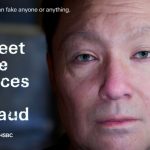Digital ad fraud seems to have become a perennial problem and there is speculation that only an AdTech crash might possibly end it.
Here are some excerpts from a Forbes interview with Cybersecurity and Anti-Ad Fraud Consultant Dr. Augustine Fou and a video elaborating on the dangers of this from Marketing Magazine Asia editor Professor Harmandar Singh (aka Ham).
Dr Fou says the problem of digital fraud isn’t an easy one to solve simply because of the middle man.
“I’ll lay it out there for you. The middle man: I’ll start there. All the ad exchanges, all the agencies that buy media, they want to buy more. If we cut out fraud, there’s going to be way less inventory for them to buy.
So, they do not want that. So, they will do everything they can to suppress news of fraud. They’re going to use all the fraud detection companies like IAS and DoubleVerify and they say, “Oh, well, IAS said it’s 0.5% percent fraud. So, everything’s fine. Please keep buying.”
Bad guys are laughing all the way to the bank, because the good guys think, “Oh, well, we use IAS and DV. Therefore, we’re safe. Therefore, we’re going to keep spending billions.” The bad guys will say, “Just bring me the money.” You might as well hand it over to them.
So, it’s a false sense of security. It’s not just that it doesn’t work. It tricks people into spending more and, therefore, they’re getting ripped off more. So, it’s doing a disservice and a harm to the entire industry, to the entire ecosystem. That’s the middle man.
The publishers are the ones who are getting less revenue. Because when the marketers spend the dollars and the dollars get highway-robbed out of the ecosystem into the bad guys’ pockets, the good publishers have less revenue left that could go through to them.
So, they’re getting hurt. But they are powerless in the sense that the fraud is not happening on their sites. But when a bad guy pretends to be a Hearst website, the marketers think they’re buying Hearst, but they’re actually not. So, in that case, their reputation is getting harmed.
Then, finally, the marketer, you would think, would want to stop the fraud because it’s their money. They’re losing their money and they’re not getting the marketing impact that they want.
But, again, they want to buy more, and they’ve been sold on this concept that there’s all these tens of billions of impressions in the long tail that they can be buying cheaply through ad exchanges.
It would be quite embarrassing for them if they admitted that there was fraud in their campaigns, because they kept telling their boss everything was fine.
So, even when we show marketers incontrovertible evidence of ad fraud, they’d rather choose to suppress the researchers and other people trying to help them so that they can tell their boss, “Everything’s fine. Let me keep spending my budget.” So, none of them want to hear about fraud. That’s including the marketers. Long story short, every party in the entire supply chain wants it to continue. Therefore, no one wants to solve it.
Dr. Fou also added that much of the performance metrics are based on incorrect data.
Bots are faking all the clicks, all the impressions and even some conversions. I recently published an article that shows how bots are faking the conversions. So, even those you can’t rely on.
I would recommend most marketers cut $100,000. They can’t cut $100 million like P&G. Cut $100,000. Wait for a month. See if there’s any change whatsoever. Guarantee you there’s no change. That’s because the digital didn’t drive any of those business outcomes. Those business outcomes would have happened anyway.
Dr Fou added that currently digital ads are being used incorrectly as a lot of big brands are spending in digital trying to achieve reach and frequency.
So, they’re taking a TV advertising mentality into digital. The key difference is that in TV there is actually limited supply. So, say, for example, Super Bowl ads. There are limited 30 second spots. Therefore, when there’s more demand, prices go up. They’ve been going up for a decade.
In digital, however, CPM prices have been going down for a decade. That’s because even though a lot of dollars are shifting into digital from TV, increasing demand, the supply side has gone up by orders of magnitude more.
Therefore the supply has just exploded because it’s all fake. Therefore, CPM prices have consistently gone down for the last ten years.
There aren’t enough humans on earth to generate that many ad impressions across display ad impressions, video ad impressions, mobile ad impressions, and now, CTV and OTT impressions.
Most of it is made up. I would say 99.999 whatever number of 9 you care to put behind it. Therefore, those brands who are treating digital as a reach in frequency medium are using it incorrectly.
“I teach companies how to solve the fraud themselves and they can actually discontinue using all the fraud detection tech companies and just look at their own analytics and reduce the fraud in their own campaigns.
“They can keep doing that. They basically don’t have to pay anybody else to do it for them, because it doesn’t work anyway.
Dr Foud said the whole concept is a glass house that will come crashing down. I don’t think it’s going to be a slow-burn kind of resolution to it.
Even the VCs (Venture Capitalists) have every incentive to keep this going because the whole concept of hyper scaling, there’s not enough humans to spend time online to continue to hyper scale.
So, the only way you’re going to get hyper scaling is by using artificial means, bots. So, in that case, the VCs don’t want this to stop because they need a way to cash out.
Everybody wants this to continue. But we have built ourselves a glass house and the only way this is going to get solved is when we have a crash like we did in 2000.
I do hope there is a crash because we’re not doing real digital marketing right now.
Real digital marketing means you generate your awareness and demand through TV ads, because that’s still a very good reach of frequency mediums to make people aware of your product.
Digital should be the medium that you use to harvest the demand. So, when they’re searching for something, that is the ideal time for you to put an ad in front of them, because not only do you know when they’re looking, you also know what they’re looking for because they typed it in the keyword.
Despite the rise of all these fraud detection technology companies, they don’t solve the fraud. In fact, they rely on fraud to continue so that they can keep making revenue.
So, that’s why I’m not a fraud detection technology company. I don’t make money off of the measurement of fraud.
Therefore, I don’t have that conflict of interest that all the fraud detection technology companies do. My motive is to show them all the data and, in fact, educate them.
If we start cutting out the fraud and stop wasting our money buying all these impressions not shown to humans in the first place, the marketing effectiveness could go way, way up.
source: Forbes magazine
MARKETING Magazine is not responsible for the content of external sites.
An afternoon of conversations we never had, with leaders most of you never met.
Discover what’s possible from those who made it possible. Plus a preview of The HAM Agency Rankings REPORT 2024.
Limited seats: [email protected]
BOOK SEATS NOW









